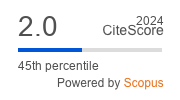N2T ‘Need to Tech discovery’ tool: enabling interaction with scientists in CBI students’ projects
DOI:
https://doi.org/10.23726/cij.2021.1289Keywords:
Human-Centred Design; Open Innovation; Design Tools; Need to TechAbstract
The ‘Need to Tech discovery’ tool (N2T) is a design tool aimed at improving the interface between the scientific community and the market-driven innovation community. N2T embeds technological and scientific inputs into human-centered design processes. Once the design team has inputs from the human-centered research, it iteratively applies a divergence map and tech functional scenarios to interact with researchers. The output is a situated list of technologies that could be embedded in the solution concepts. N2T was developed using an Action Research Innovation Management Framework during four iterations of the Oper.CBI Open Innovation Program in connection with IdeaSquare, CERN. Results show better outcomes of the design team in exploring the potential applications of technologies and a higher engagement of scientists and researchers in the challenge domain.
References
Beale, R. (2007). Supporting serendipity: Using ambient intelligence to augment user exploration for data mining and web browsing. International Journal of Human- Computer Studies, 65(5), 421-433.
BenMahmoud-Jouini, S., & Midler, C. (2020). Unpacking the notion of prototype archetypes in the early phase of an innovation process. Creativity and Innovation Management,29(1), 49–71.
Chesbrough, Henry. "From open science to open innovation." Institute for Innovation and Knowledge Management, ESADE (2015). https://www.fosteropenscience.eu/sites/default/files/pdf/1 798.pdf
Cocchi, N., Dosi, C., & Vignoli, M. (2021). The hybrid model matrix: Enhancing Stage-Gate with Design Thinking, Lean Startup, and Agile. Research Technology Management, 64(5): [In press].
Dosi, C., Mattarelli, E., & Vignoli, M. (2020). Prototypes as identity markers: The double‐edged role of prototypes in multidisciplinary innovation teams. Creativity and Innovation Management, 29(4), 648-666.Guertler, M. R., Kriz, A., & Sick, N. (2020). Encouraging and enabling action research in innovation management. R&D Management, 50(3), 380-395.
Hatchuel, A., Le Masson, P., & Weil, B. (2005). The development of science‐based products: Managing by design spaces. Creativity and innovation management, 14(4), 345-354.
Kumar, V., 2012. 101 design methods: A structured approach for driving innovation in your organization. John Wiley & Sons.
PAGE * MER
Chan, L. K., & Wu, M. L. (2002). Quality function deployment: a comprehensive review of its concepts and methods. Quality engineering, 15(1), 23-35. GEFO
Moehrle, M. G. (2005). What is TRIZ? From conceptualRMA basics to a framework for research. Creativity and T 9 innovation management, 14(1), 3-13.
Mahmoud-Jouini, S. B., Fixson, S. K., & Boulet, D. (2019). Making design thinking work: Adapting an innovation approach to fit a large technology-driven firm. Research- Technology Management, 62(5), 50-58.
Mäkinen, S., Steinert, M., Vignoli, M., Birkinshaw, J. and Nordberg, M., 2015. Inaugural Editorial: Experimentation in Innovation Studies.
Makri S, Blandford A, Woods M, Sharples S, Maxwell D (2014) “Making my own luck”: Serendipity strategies and how to support them in digital information environments. J. Assoc. Inform. Sci. Tech. 65(11):2179–2194.
Mincolelli, G., Cocchi, N., Dosi, C., & Vignoli, M. (2020). “OPER. TEN” Transform Emergency Now! -facing Covid-19 with Open Innovation and Human Centered Design. Strategic Design Research Journal, 13(3), 658- 668.Moultrie, J. (2015). Understanding and classifying the role of design demonstrators in scientific exploration. Technovation, 43, 1-16.
Peirce, C. S. (1998), The Essential Peirce, Selected Philosophical Writings, Volume 2 (1893–1913), Peirce Edition Project, eds., Indiana University Press, Bloomington and Indianapolis, IN, 230-231.
Sarpong, D., & Maclean, M. (2011). Scenario thinking: A practice-based approach for the identification of opportunities for innovation. Futures, 43(10), 1154-1163.
Van der Bijl-Brouwer, M., & Dorst, K. (2017). Advancing the strategic impact of human-centred design. Design Studies, 53, 1-23.
Von Hippel, E., & Von Krogh, G. (2016). Crossroads— Identifying viable “need–solution pairs”: Problem solving without problem formulation. Organization Science, 27(1), 207-221.
Downloads
Published
How to Cite
Issue
Section
Categories
License
Copyright (c) 2021 Bernardo Balboni, Clio Dosi, Silvia Marchini, Giuseppe Mincolelli, Matteo Vignoli

This work is licensed under a Creative Commons Attribution 4.0 International License.
Authors who publish with this journal agree to the following terms:
- Authors retain copyright and grant the journal right of first publication with the work simultaneously licensed under a Creative Commons Attribution License that allows others to share the work with an acknowledgement of the work's authorship and initial publication in this journal.
- Authors are able to enter into separate, additional contractual arrangements for the non-exclusive distribution of the journal's published version of the work (e.g., post it to an institutional repository or publish it in a book), with an acknowledgement of its initial publication in this journal.
- Authors are permitted and encouraged to post their work online (e.g., in institutional repositories or on their website) prior to and during the submission process, as it can lead to productive exchanges, as well as earlier and greater citation of published work (See The Effect of Open Access).


